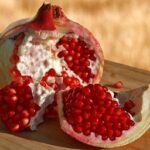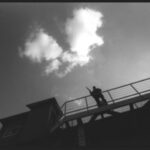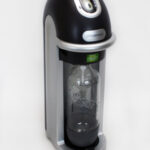Mixing baking soda and vinegar is not only fun, but it is also quite educational. In fact, the chemical reaction between baking soda and vinegar is probably the first exposure to chemical reactions that many of us have when we are children. This is partly because baking soda and vinegar can be found in just about any kitchen anywhere, and partly because both ingredients are safe and non-toxic, making it an ideal experiment for kids.
Just why does a mixture of baking soda and vinegar bubble, fizz and froth? It is a chemical reaction between the two that causes the bubbling. Baking soda is actually sodium bicarbonate, which has the chemical formula NaDCO3. Vinegar is acetic acid mixed with water and has the chemical formula CH3COOH. When the two chemicals are mixed together they produce the formula:
NaHCO3 + CH3COOH –> CH3COONa + H2CO3
To see why the bubbling happens, we need to look at the last part of that equation. The H2CO3 is carbonic acid which very quickly breaks down into carbon dioxide (CO2) and water (H2O). The carbon dioxide is what causes the bubbling and foaming when baking soda and vinegar are mixed. Pretty cool!
Mixing baking soda and water is a great project for a science fair and can be made even cooler by making a baking soda and vinegar volcano. When I was little my brother and I would make volcanoes in our sandbox using sand, but it is more practical to make a volcano for a science fair out of something more permanent.
An easy way to make your volcano form is to take an old lampshade and cut a piece of cardboard to cover the hole in the top of the shade. Glue the cardboard onto the lampshade covering the hole. Then, cover the lampshade with strips of gauze dipped in plaster of paris. You can also buy gauze that has already been dipped in plaster for easier application. Just dip the gauze strips in water and smooth them over the lampshade until you have a nice volcano shape. Build the top of the volcano up leaving a cup or well (crater) in the middle where you can mix the baking soda and vinegar.
Once you have gotten your volcano how you want it, let the plaster dry and then paint it to look more realistic. Let the paint dry. Once you are sure that everything is dry you are ready to start on your experiment.
First, put a couple of tablespoons of baking soda into the crater in the top of the volcano. If you want your “lava” to be colored you can mix a bit of food coloring with a touch of water and add it to the baking soda at this point, mixing it together until it is even. Red lava looks pretty cool, or you can make it orange by adding a little bit of red and yellow food coloring. Next, add about 1/2 cup of vinegar to the crater and stand back to watch your volcano erupt.
This can be a messy experiment so be sure to do it somewhere that is easy to clean and have plenty of paper towels on hand for wiping up messes!



